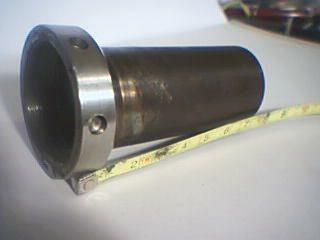Drilling big holes in 304 stainless steel
Drilling big holes in 304 stainless steel
- This topic has 14 replies, 11 voices, and was last updated 25 November 2015 at 12:00 by
 Martin Connelly.
Martin Connelly.
Viewing 15 posts - 1 through 15 (of 15 total)
Viewing 15 posts - 1 through 15 (of 15 total)
- Please log in to reply to this topic. Registering is free and easy using the links on the menu at the top of this page.
Latest Replies
Viewing 25 topics - 1 through 25 (of 25 total)
-
- Topic
- Voices
- Last Post
Viewing 25 topics - 1 through 25 (of 25 total)
Latest Issues
Newsletter Sign-up
Latest Replies
- Drilling feed rates
- Electric Car Battery Retention
- How to identify a thread, ACME vs TR
- CA glue and magnetism
- Calling all Little John and other Raglan users
- Cheap but useful Multimeter
- ZYTO mini Lathe – need help!
- 3D Touch Probe, Sieg KX3 & Mach3
- Parting off – Left over nib
- Alibre Workshop/Meshcam pro


 insert.. Or even a good, sharp HSS boring bar…
insert.. Or even a good, sharp HSS boring bar…



